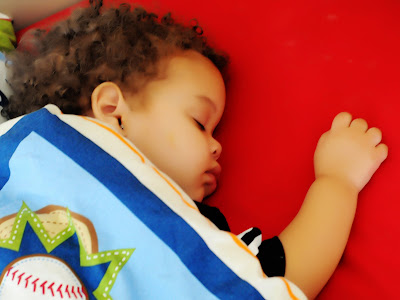ADHD What is it and Who does it Affect?
Attention Deficit Hyper-activity Disorder (ADHD) is a ailment of the brain that causes atypical behavioral patterns. ADHD presents itself in the early childhood years (before the age 7) and may continue through adulthood. There is an estimated 2 million children (or one child in every classroom) with ADHD in the United States, with the number of boys tripling that of girls. Doctors have not yet developed a specific test for the diagnosis of ADHD and for this reason many children have been misdiagnosed.
There is no cure for ADHD and the exact cause of it is unclear, however there are several implications:
*Heredity
* Neurotransmitters in the brain
* Trauma or severe emotional stressors
* Exposure to high levels of toxin (such as lead)
* Sleep deprivation
* Fetal exposure to smoke, alcohol, or drugs
* Inappropriate diet can increase risks of ADHD
** ADHD is NOT caused by bad parenting**
Characteristics of ADHD
ADHD indicators should exist for at least 6 months and displayed in a variety of settings before attempting to receive a diagnosis.
Inattention
* Short attention span
* Trouble following through with activities
* Avoids or dislikes activities that are challenging
* Often misplaces things that are needed
* Difficulty following instructions
* Difficulty listening even when spoken to directly
* Easily distracted or forgetful
* Disorganized
* Tendency to make careless errors on schoolwork
Impulsive
* Excitability
* Difficulty taking turns
* Low frustration tolerance
* Constantly interrupts others
* Displays poor judgment and planning skills
* Blurts out answers before being called on
* Requires significant supervision
Hyper-Activity
* Excessive Talking
* Running, jumping, and climbing at inappropriate times
* Difficulty staying seated, even when expected
* Often seems fidgety or unable to stay still
Social Issues
*Difficulty following rules
* Poor interaction with peers
*Often needs to be the center of attention
* Constantly ask questions and interrupts class
* Engages in inappropriate behavior to seek attention
* May suffer from low self-esteem
Treatment
There are several treatment options for children with ADHD. These include behavioral therapy, medications and strong social support.
Positive behavior can be reinforced by using a reward chart or other type of system that gives small tokens for appropriate behavior. There should be clear consequences for inappropriate behaviors. It may also prove helpful for children and families to talk to a psychologist . Therapy sessions will allow children to talk about things going on in life and also learn new tactics for controlling attentiveness and positive ways to release energy. For families, therapies sessions will provide vital information on how to cope with a child or sibling that has ADHD.
Medication
At times medication may be needed to help control symptoms. There are variety of choices available which include stimulants and non-stimulants. Stimulants like Ritalin and Adderall are often prescribed because they have proven safe for extended usage. These medications are very potent so the proper dosing is cautioned. Many skeptics believe stimulants can cause addiction, but studies show no children have become dependent who were given the recommended dosage. Side effects of stimulants include decreased appetite, restlessness, anxiety, and headaches. Non stimulant medications may be better fitted for some individuals. The side effects for these include liver damage and suicidal tendencies. Talk to a physician about any concerns.
Parental Solutions
Inattention
* Make eye contact as you are talking
* Offer one directive at a time
* Reduce distractions when it is time to concentrate on completing a task (turn off television, radio, video games etc.)
* Praise appropriate behavior (high 5's, hugs, words of affirmation, other small tokens)
* Be realistic about your expectations, practice makes perfect
* Speak to your child in short and clear words (avoid long winded directions)
* Break down larger task in smaller ones ( instead of "clean your room" try "place all your toys in the toy box and make your bed" )
Impulsive
* Give clear expectations and repeated reminders
* Ensure proper supervision
* Create a routine and try to implement daily
* Provided structured activities, trying not leave substantial free time
* Get organized, place book bags, clothes and toys in the same place so child is less likely to misplace them
* Set grounds for acceptable silliness
* Limited choices to two ( more can cause the child to be overwhelmed)
* Teach proper behaviors
* Give consequences for inappropriate behavior immediately
Hyper-activity
* Ensure proper amounts of sleep and well balanced meals
* Find appropriate times during the day for child to release energy (allow to run)
* Allow to take brakes and get up if expected to sit for long periods
* Try to get teachers that are upbeat and can keep children's attention
Attention seeking behavior
* Give attention only to positive behavior
* Let the child know that you would like to give them attention, and help them find positive ways to get it
Diagnosis of ADHD
* Symptoms last at least 6 months
* Symptoms appear before the age 7
* Symptoms are present in a variety of places (home, school, childcare, with peers)
*Physical examine by physician to rule out any possible physical causes
* Answer several questions doctor will ask about child's development and behavior
* You, teacher, family members and childcare providers will fill out questionnaires about child's development
* Possible evaluation


























